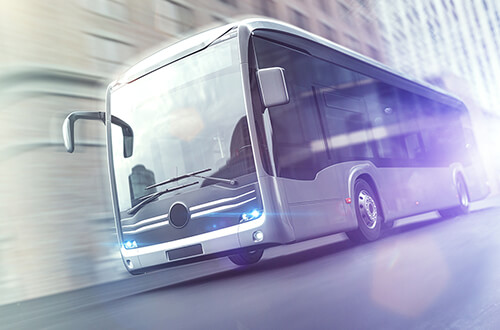|
|
|
|
|
|
|
|
Rechargeable car battery: Differentiation of hybrid drives
While pure electric cars have to do battle with low ranges and long charging times, hybrid vehicles are free of these weaknesses. They combine the advantages of combustion engines and electric motors. Find out what types of hybrid vehicles there are and what their advantages and disadvantages are.
The keypoints in short
- Two different types of drive can be found in hybrid vehicles. A conventional combustion engine is combined with an e-motor powered by a rechargeable car battery.
- In hybrid-drive vehicles, there are significant differences in the function and performance of the two engine types.
- The three main types of hybrid drive are the mild hybrid, the full hybrid and the plug-in hybrid.
Hybrid: Electric or fuel? Both!
A vehicle with a hybrid drive combines the advantages of combustion engines and electric cars. While petrol and e-cars use either electricity or a fossil fuel, a hybrid vehicle is always equipped with both technologies. The basic idea behind hybrid drive technology is using environmentally friendly electric drives in conjunction with an internal combustion engine.
A hybrid vehicle is equipped with a rechargeable car battery, the capacity and performance of which, however, can vary considerably depending on the drive concept. Depending on the drive technology, the rechargeable car batteries can be exposed to high thermal loads. If the ambient temperature falls below minus 10 degrees Celsius or exceeds 40 degrees Celsius, many batteries no longer operate in the optimal performance range. Very high temperatures can also occur during acceleration or when recovering electrical energy during braking due to power peaks. For this reason, the temperature management is of particular importance in electric and hybrid vehicles. In the past, the technology specialist HELLA has carried out very successful development work in this area and has established several temperature management systems on the market.
This charging socket is hidden under the fuel filler flap of an electric vehicle.
Mild hybrid, full hybrid, plus-in hybrid – here are the differences
Some of the hybrid vehicles generate electrical energy, which is temporarily stored in a rechargeable car battery, via the combustion engine itself. Another concept is the recovery of electrical energy when braking or driving downhill. The third type of hybrid vehicle can be supplied with electrical energy via a charging station.
Mildhybrid
Mild hybrids are vehicles with rechargeable car batteries that recover electrical energy when braking or rolling downhill. The electrical energy temporarily stored in the batteries, which are comparatively small, can then be retrieved when starting, pulling away and overtaking. The electric motor then supports the combustion engine. In this way, the combustion engine can always operate in the optimal speed range, which reduces fuel consumption and, as a result, CO2 emissions. The electric drive never works alone in a mild hybrid: it always serves as a support for the combustion engine.
Full hybrid
Full hybrids are equipped with a significantly larger battery that is charged by the combustion engine's operation or by recuperation of electrical energy during braking. Full hybrids are fuelled with fossil fuel but are not supplied with electrical energy from outside. Full hybrids are capable of driving solely on electric power. Compared to a purely electric vehicle, however, the driving radius is limited.
Electrically powered vehicles have long since become part of everyday life.
Plug-in-Hybrid
This type of hybrid represents a further development of the full hybrid towards an electric vehicle. A plug-in hybrid can also recharge its rechargeable car battery via recuperation. In addition, however, it can be charged with power from an external power supply. One option is to recharge via a wallbox, which is installed at a private parking space or in the owner's garage. The second option is recharging via a public charging station. However, this will incur higher costs and the charging station infrastructure is not comprehensive yet. Plug-in hybrids currently have an average range of between 40 and 60 kilometres with pure electric drive.




